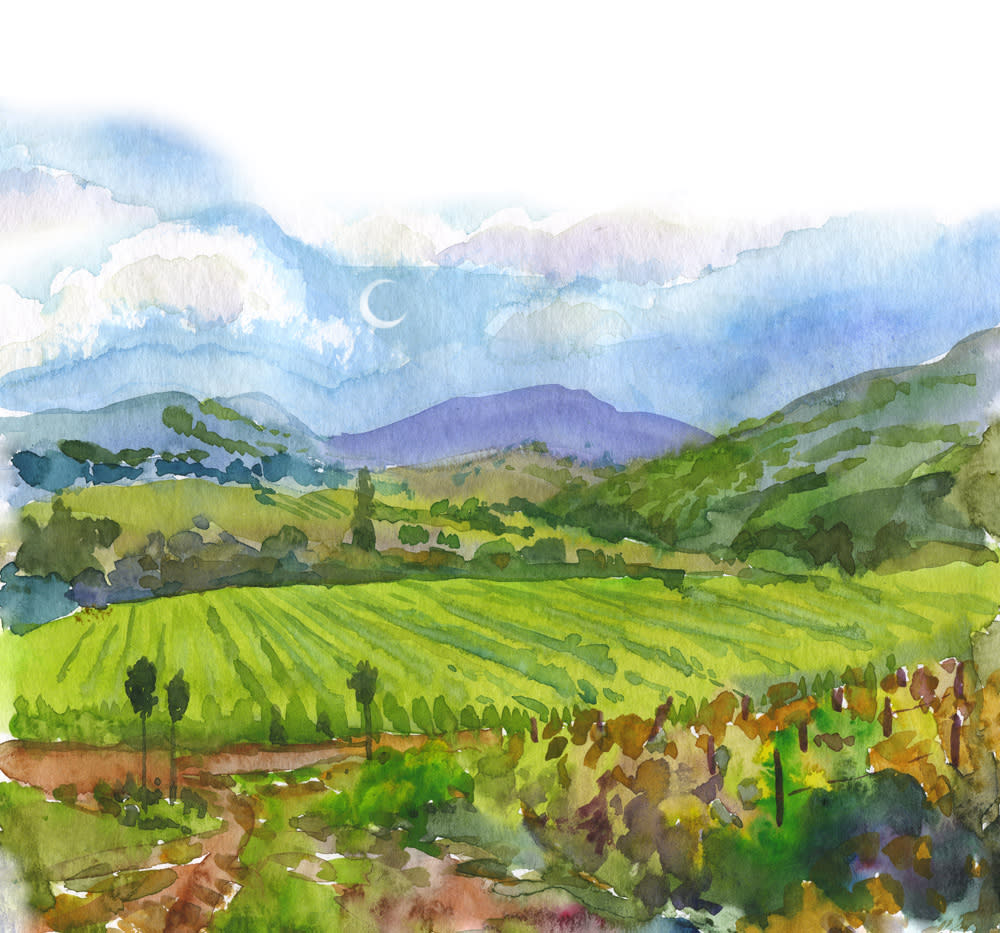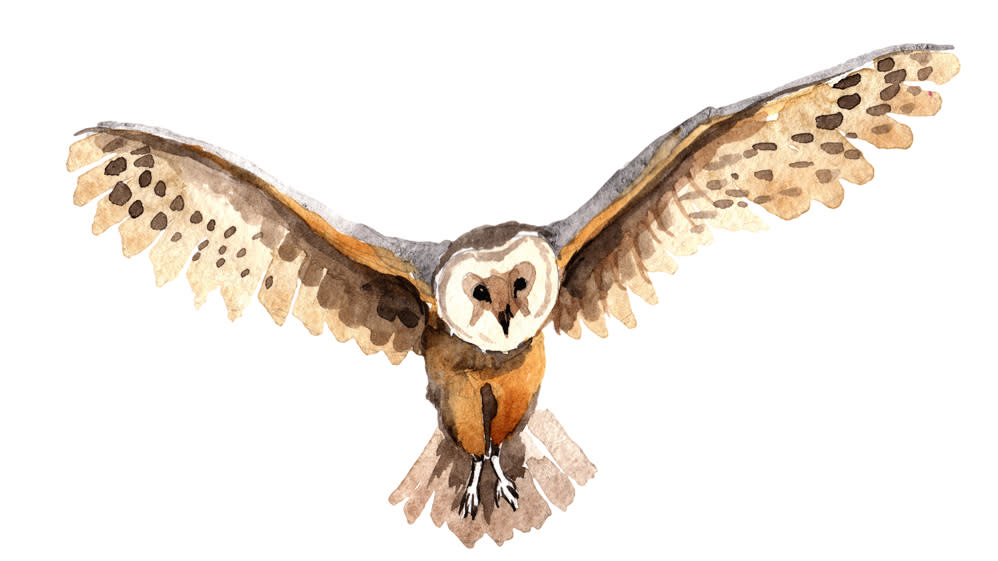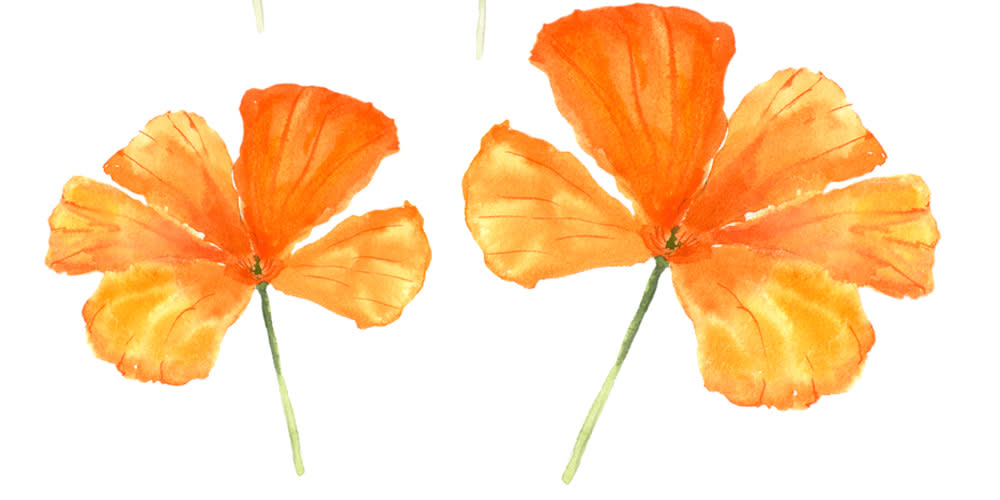Sonoma Valley’s diversity of natural habitats and micro-climates makes it a perfect spot to see wildlife and unique plants.
The fact that the greater county of Sonoma boasts over 400 species of endemic plants, of which 150 are rare species or subspecies, is a testament to the incredible richness of our valley. From the marshes of San Pablo Bay and the thermal springs at Boyes Hot Springs to the slopes of Sonoma Mountain to the heights of Sugarloaf Mountain State Park, there is an abundance of wild beauty to discover.
Use this field guide as a starting point for your exploration of Sonoma Valley. The state and regional parks mentioned are great resources with more information and local experts. We encourage you to reach out to them, visit their visitors’ centers and websites, and sign up for guided tours to learn more. Read below to see a recap of the guide or download your own version here.
GEOGRAPHY & CLIMATE
Sonoma Valley is located in Northern California, northeast from San Francisco. Stretching 17 miles long from San Pablo Bay in the south to the city of Santa Rosa to the North, the valley is flanked by Sonoma Mountain to the west and the Mayacamas range to the east. It comprises about 20% of the area of Sonoma County, one of the nine San Francisco Bay Area counties.
Sonoma Valley reigns as one of California’s top wine and agricultural regions for its famous terroir, enhanced by the cooling breezes blowing north from San Pablo Bay. Hot summers and mild winters create ideal farming conditions, particularly for grapes. To the west, Sonoma Mountain protects it from Pacific stormfronts, yielding a meager 29 inches of rainfall per year and making the valley one of the driest viticultural (aka: grape-growing) regions in Sonoma County. While the mountains protect it from rainfall, they also allow enough coastal fog to blow in to shield the grapes from the warm summer sun. Various microclimates create an enviable diversity of terroirs, allowing for a multitude of different grapes to thrive here.

What is terroir?
A winemaking term used to describe the combination of the microclimate of a growing region with soil type, topography, sun exposure, and impact this has on the final wine.
GEOLOGY
Sonoma Valley is a 166-square mile watershed, starting in the mountains that demarcate Sonoma Valley from Napa Valley (to the east) and the Santa Rosa Plain (to the north and west.) Deposits from Sonoma Creek and its tributaries, opening to an alluvial fan that opens to San Pablo Bay in the south, have left lenticular deposits of sand, silt, gravel and clay. Metamorphic rocks from the Jurassic to Pliocene periods, marine shale and sand from the Petaluma Formation, Sonoma Volcanics of Pliocene age, and alluvial deposits from the Quartenary age have all shaped the geology and soil of the valley.
As part of the Coastal Range, the local bedrock consists of deposits of shale, sandstone, limestone and conglomerate. Ancient volcanic activity from the late Miocene-Pliocene time (~10 to ~4 million years) formed the outcroppings from Sears Point through Santa Rosa, creating volcanic lava flows interbedded with gravel. The Hayward-Sonoma Valley-Carneros fault line separated Sonoma north from San Jose, creating what is now the North Bay.
Today, the valley is filled with alluvial deposits of unconsolidated marine sediments, continental sediments, and volcanic rocks from the Pliocene and Pleistocene ages that drain south into San Pablo Bay. As a result, Sonoma Valley is comprised of 15 different soil types, which make our local wines so complex and diverse.
WILDLIFE
Sonoma Valley’s grasslands, oak woodlands, redwood forests, and creeks create mutiple unique habitats for local wildlife. Known for 350 different species of birds alone, the valley is also home to a rich population of mammals and reptiles. In 2010, the Sonoma Land Trust began focusing effort on protecting a wildlife corridor used by animals to travel between Sonoma Mountain to the west and the Mayacamas Range to the east, securing bridges of safe space for animals to mate, feed, shelter and travel under and around Highway 12. This corridor also connects to a larger protected area, stretching from Marin County to the eastern side of Napa County. In the face of climate change, these areas are critical in allowing wildlife to adapt.
Common Resident Birds in Sonoma Valley
| American Goldfinch (Spinus tristis) American Robin (Turdus migratorius) Anna’s Hummingbird (Calypte anna) Black Phoebe (Sayornis nigricans) California Quail (Sayornis nigricans) California Towhee (Melozone crissalis) Great Egret (Ardea alba) Great Blue Heron (Ardea Herodias) Red-shouldered Hawk (Buteo lineatus) Red-tailed Hawk (Buteo jamaicensis) |
House Finch (Haemorhous mexicanus) Mallard Duck (Anas platyrhynchos) Mourning Dove (Zenaida macroura) Barn Owl (Tyto alba) Great Horned Owl (Bubo virginianus) Northern Flicker (Colaptes auratus) Western Scrub-Jay (Aphelocoma californica) Western Bluebird (Sialia Mexicana) Acorn Woodpecker (Melanerpes formicivorus) |

Common Terrestrial Wildlife in Sonoma Valley
| Black-tailed Deer (Odocolileus hemionus) Coyote (Canis latrans) Gray Fox (Urocyon cinereoargenteus) Bobcat (Felis rufus) Mountain Lion (Puma concolor) Virginia Opossum (Didelphis virginiana) Black-tailed Jackrabbit (Lepus californicus) Brush Rabbit (Sylvilagus bachmani) Raccoon (Procyon lotor) River Otter (Lutra canadensis) |
Striped Skunk (Mephitis mephitis) Long-tailed Weasel (Mustela frenata) Sonoma Chipmunk (Neotamias sonomae) Western Gray Squirrel (Sciurus griseus) California Ground Squirrel (Spermophilus beecheyi) Western Pond Turtle (Actinemys marmorata) Pacific Gopher Snake (Pituophois catenifer) Western Fence Lizard (Sceloporus occidentalis) Northern Red-legged Frog (Rana Aurora) California Giant Salamander (Dicamptodon ensatus) |
PLANTS
Sonoma Valley’s Mediterranean climate is defined by hot, dry summers and mild, wet winters. While flowers bloom throughout the year, the best viewing of all is undoubtedly in the springtime, following our seasonal winter rains. However, if you want to be wowed at an unexpected time of the year, be sure to visit in late winter when mustard paints the vineyard rows yellow and many trees are in bloom. Sonoma Valley is an artist’s palette of vibrant colors you won’t want to miss!
Common Trees in Sonoma Valley
| Valley Oak (Quercus lobate) Coast Live Oak (Quercus agrifolia) Black Oak (Quercus kellogii) California (bay) Laurel (Umbellularia californica) Douglas Fir (Pseudotsuga menziesii) Knobcone Pine (Pinus attenuate) Sequoia (Sequoia sempervirens) California Buckeye (Aesculus californica) Madrone (Arbutus mensiesii) Toyon (Heteromeles arbutifolia) |
Big Leaf Maple (Acer macrophyllum) Red Willow (Salix laevigata) Arroyo Willow (Salix lasiolepis) Red Alder (Alnus rubra) California Ash (Fraxinus dipetala) Fremont Cottonwood (Populus fremontii) Tanoak (Notholithocarpus densiflorus) Manzanita (Arctostaphylos spp.) Western Redbud (Cercis occidentalis) Creek Dogwood (Cornus sericea) |

Common Wildflowers in Sonoma Valley
| Butter & Eggs (Triphysaria eriantha) Tidy Tips (Layia platyglossa)| lue-Eyed Grass (Sisyichium bellum) California Golden Violet (Viola pendunculata) Checker Mallow (Sidalcea malviflora) Sky Lupine (Lupinus nanus) Ground Iris (Iris macrosiphon) Diogenes’ Lantern (Calochortus amabilis) Pacific Trillium (Trillium ovatum) Checker Lily (Fritillaria affinis) |
Calypso Orchid (Calypso bulbous) Narrowleaf Milkweed (Asclepias fascicularis) Seep-Spring Monkey Flower (Erythranthe guttata) California Wild Rose (Rosa californica) Milkmaids (Cardamine Californica) Common Sunshine (Blennosperma nanus) Blue Dicks (Dichelostemma capitatum) California Buttercup (Ranunculus californicus) Freemont’s Star Lily (Toxicoscordion fremontii) California Poppy (Eschscholzia californica) |
Sonoma Valley Nature Parks
Witness nature in all its glory, from the redwood forests of Sonoma Mountain and the heights of Sugarloaf Mountain State Park, to the flat meadows of the valley floor and lowland marshes along San Pablo Bay. There’s something for every interest and ability to enjoy!
Bartholomew Park; Sonoma, CA (birds, wildflowers)
Jack London State Historic Park; Glen Ellen, CA (wildflowers, redwood trees)
San Pablo Bay National Wildlife Refuge; Sonoma, CA (birds)
Sears Point Ranch; Sonoma, CA (birds)
Sonoma Botanical Garden; Glen Ellen, CA (rare flowers & trees)
Sonoma Garden Park; Sonoma, CA (birds, permaculture exhibits, wildflowers)
Sonoma Overlook Trail & Montini Preserve; Sonoma, CA (wildflowers, oak forests, wildlife)
Sonoma Valley Regional Park; Glen Ellen, CA (wildflowers, wildlife)
Sugarloaf Ridge State Park; Kenwood, CA (birds, wildlife, wildflowers)
Trione-Annadel State Park; Santa Rosa, CA (birds and wildflowers)
SOURCES:
California Department of Fish & Wildlife / California Department of Parks & Recreation / California State Parks / Milo Baker Chapter of the California Native Plant Society / Sonoma Birding / Sonoma County Regional Parks / Sonoma County Tourism / Sonoma Ecology Center / Sonoma Land Trust / Sonoma Valley Ground Water Sustainability Agency / Sonoma Valley Vintners & Growers Alliance
ACKNOWLEDGMENTS:
A special thank you to Tony Nelson and Jeanne Wirka of the Sonoma Land Trust for their collaboration and to Tom Rusert of SonomaNature.org for his expertise on the birding world.
